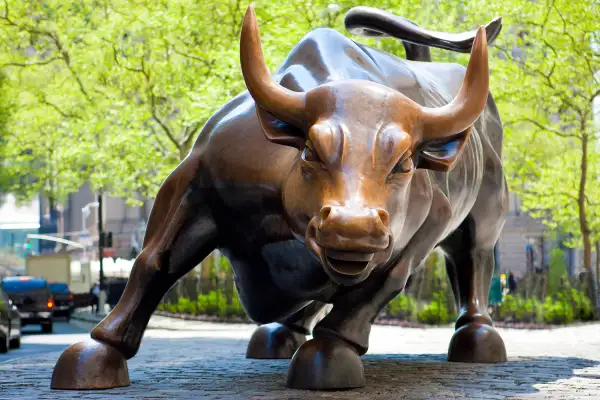The Stock Market is at Record Highs Again. Here's Why That's Important.
Money is not a client of any investment adviser featured on this page. The information provided on this page is for educational purposes only and is not intended as investment advice. Money does not offer advisory services.

On Monday, the S&P 500 index of blue chip U.S. stocks closed at an all-time high of 2,137.16.
Then on Tuesday, the more-widely followed Dow Jones industrial average — which measures the performance of the economy's 30 most influential companies — hit its own record high, closing at 18,347.67, surpassing the previous all-time high of 18,312.39 on May 19, 2015.
The stock market's return to record territory isn't simply a sign that investors have moved past the panic surrounding last month's Brexit vote, which fueled concerns about the global economy.
There's more to it than that.
Why is this important?
Until the stock market returns to record levels, it's almost impossible to be sure what type of market this is.
The funny thing about bull and bear markets is that you really can't tell what the official start and end dates are until after the fact. For instance, from their May 2015 highs, stocks fell more than 14% by mid-February and then came nearly all the way back. But if equities never climbed back above their May 21 closing value, investors can't officially say that the past year has been the latest leg of the bull market that began in March 2009.
"We need the S&P 500 to close above 2130.82 to make that claim," said Doug Ramsey, chief investment officer for the Leuthold Group, as asset management firm in Minneapolis.
That took place on Monday.
So what happens now?
Investors now know that the bull market is still alive and that it is indeed seven years old. But they'll also know that the selloff that stocks experienced between May 2015 and February 2016 was actually a severe "correction," where stocks lost 14.2%. It was not a bear market, which is considered a drop in stock values of 20% or more.
Why does that matter?
For one thing, it means the bull market has more room to run. The median gain for stocks after the market rebounded from a major correction of between 14% and 20% drop was about 12%, according to figures compiled by S&P Global Market Intelligence.
That may not sound like a lot, but a 12% gain on the S&P 500 would put the index at around the 2,384 level, or 255 points above where it is now. That same 12% gain would add nearly 2,200 points on the Dow Jones industrial average, pushing the benchmark above the 20,324 level.
Moreover, it means that this bull market is likely to survive until at least the start of next year. The median duration for a stock market recovery after a major correction (again defined as a loss of more than 14% but not quite 20%) was 177 days.
But is there economic justification for the bull to keep running?
For one thing, the strong June jobs report — showing that the economy grew fast enough to produce 287,000 new jobs last month — indicates that a recession probably isn't lurking just around the corner. And the vast majority of bear markets are sparked by or form in anticipation of shrinking economic activity.
A steady progression of Federal Reserve interest rate hikes has historically been a precursor of past recessions. But that is not the case nowadays. Burt White, chief investment officer for LPL Financial, discovered that in the eight most recent downturns before the 2007-2009 recession, the Fed raised rates anywhere from 10 times to 35 times before the next recession occurred. The average number of rate hikes was 17.
"The biggest factor in a recovery is not the fact that GDP or stocks have recovered but that the Fed has begun to normalize rates," White says.
Yet since the last recession ended in June 2009, the Fed has so far hiked rates just once — last December, when the central bank raised rates by a mere 0.25 percentage points.
This is why White believes "we're not at the end of the economic cycle. We're still waiting for the clock to start" on that, he says.
